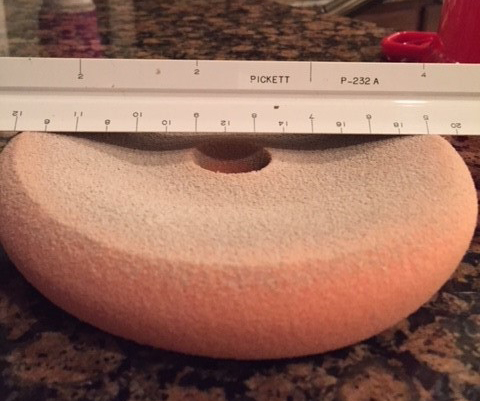Force Pads are designed for forced rotation machines, particularly the Flex 3401 in mind. So being geared for that machine, there are design elements that are not ideal for lower power DA's and long stroke DA's. Two particular elements of the Force pad line are closed cell foam, and being thick. The Flex 3401 is a workhorse in that it is forced, yet a smaller orbit than long throw machine. Therefore, the closed cell reduces saturation, and puts the compound to work keeping it between the surface and the pad rather than in the pad. The thinker pad is due to the transmission of power on "the beast". Now, what does this mean when you put these pads on machine sit wasn't designed for?
1) On lower powered machines the thick pad doesn't rotate, the orbiting creates heat but it is not dispersed with the lack of rotation, couple that with closed cell foam, and he heat generation is higher. Think about standing in the sun with no breeze, then in the same with a breeze, cooler with a breeze. Same applies with rotation. You may not have a lot of heat on the surface, but internally in the pad it's getting hot.
2) Thicker pad is harder to get up to speed on lower power machines, more stall, less or no rotation, and then you're back to #1 above
3) On long throw machines, as we know the long throw is fast correction, but it also generates a lot of heat, see #1 above. Closed cell foams don't disperse heat well, so when you add pressure, the fibers are compressed and in many cases flat rubbing other fibers of other cells, with is increased friction, and heat, internally in the pad, and it breaks down, so a thermal and mechanical breakdown.
So if you're not getting the results you desire, it's common to crank up the machine, and add pressure. Both which in the scenarios above make the situation worse, when using a less than ideal pad for the machine. Then you can mix in the variables in amount of compound/polish.
We make great pads, but there are some, particularly the Force pad line that are really specific in their design intent. Because of the quality of our pads, people buy them on name alone, not knowing design elements or features can exist in a piece of foam. We truly do test and design pads for specific applications. Foam isn't just foam. Then there are videos on the internet stating "always use a thick pad", "always use a thin pad", and they have not even researched the first thing about the pad itself, or it's intended use. If you look at our new catalog, you will see a tool guide with little number icons, and for each product line page, it lists the tool type the pad is meant for based on the number icons. Can you slap a pad on any machine and use it, you certainly can, but you may be cutting yourself short on work to achieve it, the time to achieve, and maybe more importantly getting the proper durability out of the pad.
Here is a link to our catalog, that also is a guide to what pads for what machines:
http://lakecountrymfg.com/LC-FullCat-8-03-18.pdf
I hope this info is helpful!


